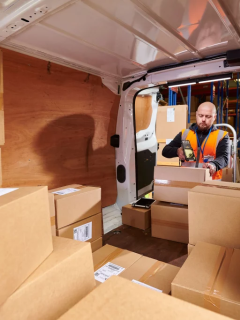Packaging and transporting works of art is a real challenge. This process therefore differs considerably from traditional e-commerce processing. These goods – think of paintings – are usually expensive, fragile and bulky. So what is the best way to handle them? Here we show you a handy four-step guide to successfully packaging all kinds of artwork, ready for smooth shipment and delivery.
Step 1: Choose the right packaging for your paintings
Paintings and other works of art are often fragile and expensive. All the more reason to pay extra attention to choosing the right packaging. Check below which packaging materials are best suited in function of your goods. Choose from sending:
- A painting in a frame
- A painting or photo on a roll
- A flat artwork
- A sculpture
► 1. To send a painting in a frame
If you want to send paintings that are still framed, start by choosing suitable protective material. Wrap this around the artwork for optimal security. The protective material should preferably be scratchproof, shockproof and antistatic. Choose from one of the solutions below:
Fluorescent paper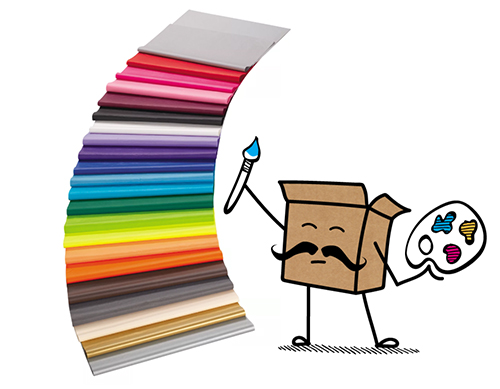 |
. With extra soft texture and available in numerous colours. . |
Foam film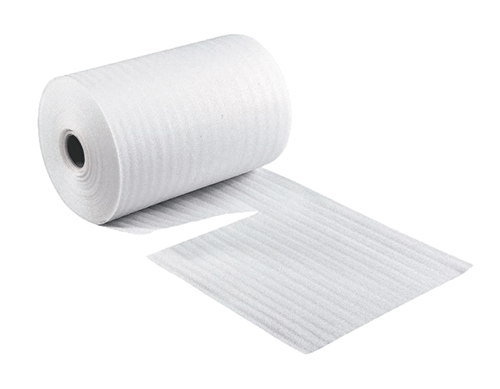 |
. As effective as silk paper, but stronger and more shock-resistant. . |
Wrapping paper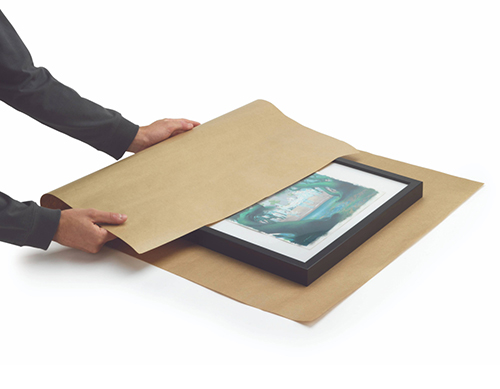 |
. Wrap your paintings with this tear-resistant and eco-friendly material. Made from renewable raw materials. . |
Bubble wrap.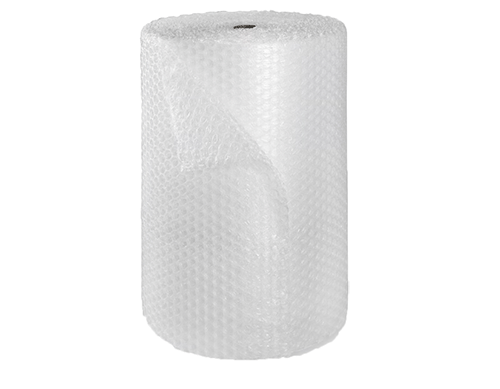 |
. A classic and effective protective material . . Tip: to be used as an additional protective layer against shocks. . |
With the above materials, you have by now been able to wrap your paintings well. This will better protect them from scratches and (light) shocks, among other things. Next, we will choose a suitable packaging especially designed for framed paintings. You can choose from the following packaging options:
Postal box with foam padding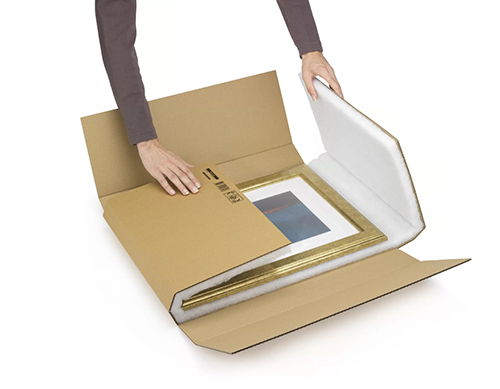 |
. . Double protection against shocks and scratches due to soft foam padding on the inside and 2 cardboard layers on top. |
Extendable lid box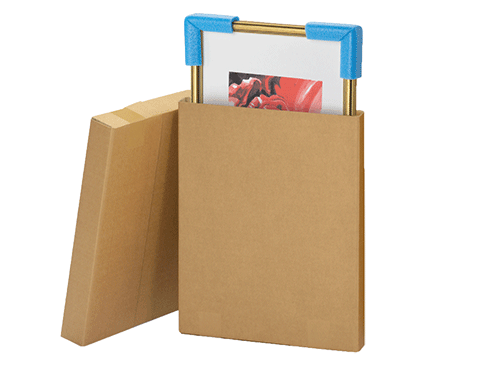 |
.
. |
Cross-wrap packaging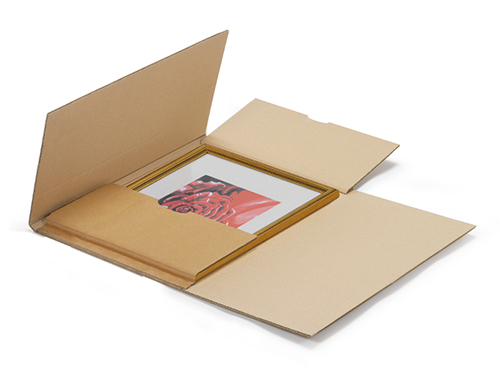 |
. . Easy to close and open. With shock-resistant protective edges and variable filling height. |
► 2. To send a painting or photo on a roll
Can your painting be easily rolled up without damaging it? Then you can choose from some customised packaging below. Remember to wrap your painting or photo in a layer of tissue paper or foam foil first. This gives optimal, soft protection and prevents possible scratches. Then wrap it in a second layer of, for example, kraft paper or bubble wrap for perfect shock protection. After that, you can wrap the rolled artwork in one of the following solutions:
Shipping tube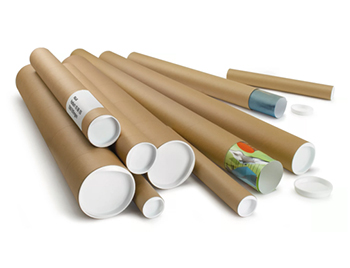 |
. . A shipping tube is available in a round, square or triangular model, and available in different sizes depending on the size of your painting or picture. |
Long lidded box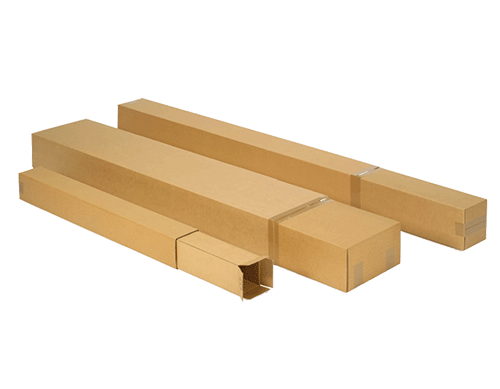 |
. . Determine the length you want: the lid slides over the box and adjusts to the length of your products. |
► 3. To send a flat artwork
Shipping a flat artwork? Then start by putting it on a sturdy piece of cardboard first. That way it can easily keep its flat shape throughout the logistics chain. That way, you prevent your artwork from bending or breaking. Next, wrap your artwork in an electrostatic plastic bag before sliding everything into packaging. That packaging can be a strong padded bag, or a compact cardboard box.
► 4. To send a sculpture
Now, every sculpture, big or small, has different characteristics. So you will have to choose a protective material that is very flexible and can easily avoid scratches and bumps. For this purpose, bubble wrap is generally recommended. After your sculpture has been securely wrapped, choose a wooden crate that fits as closely as possible around the work of art. We recommend choosing a crate that extends 5 to 10 centimetres over each side of the sculpture. Then clamp the sculpture as tightly as possible in the crate. The best materials to do this with are listed below.
Step 2: Add extra protection to your paintings or artwork
Before you effectively give your paintings or artworks to a courier service, there are a few points to consider. Extra protection is no luxury. Therefore, consider the following tips:
- [1] Add padding material: make sure your works of art are firmly secured in the box. Notice that there is still some play? Then use foam pads or filling chips. This way you clamp everything securely and considerably reduce the risk of damage.
- [2] Add corner protection: framed paintings have particularly vulnerable edges. Therefore, provide those edges with cardboard corners or foam profiles.
- [3] Wrap your parcel with stretch film: thanks to this extra layer, your entire parcel is protected from moisture and all kinds of unwelcome weather conditions during transport. You can also choose black stretch film to shield the contents of your package from prying eyes. Put warning labels on your parcel: make sure it is clear to your carriers that they are dealing with a fragile or vulnerable parcel. Stickers with the message ‘Fragile’ or ‘Handle with care’ then come in handy.
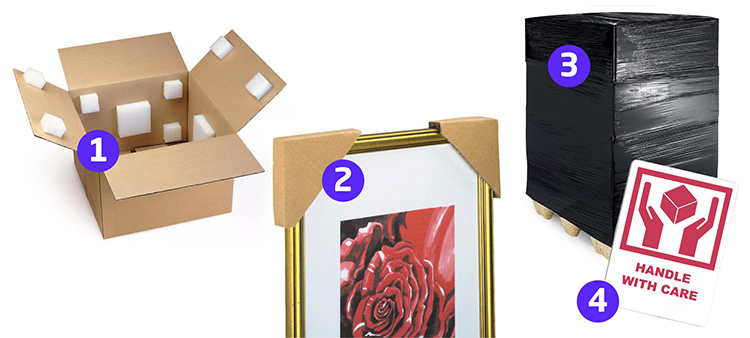
Step 3: Choose the right transport partner to suit your needs
This third step is crucial for the smooth shipment of your paintings and artworks. If your artworks are not very expensive, you can choose to ship using a standard courier service such as PostNL, for example. Your parcel will then still have to comply with a number of standard rules and values. In the case of PostNL, these include the following (always check the website for the most up-to-date conditions):
- Maximum weight: 31.5 kg.
- Maximum length: 175 cm.
- Maximum width: 78 cm.
- Circumference + length maximum: 300 cm.
- Minimum size: 14 x 9 cm.
If your works of art are more expensive or fragile anyway, choose a specialised carrier. Their personnel are perfectly trained in the safe loading and unloading of works of art – by the way, this is often done according to the ‘door-to-door’ principle, i.e. directly from the sender to the recipient. For international deliveries, you can use sea, air, rail or river transport. However, road transport remains the safest way to move these types of fragile goods. If you choose such a specialised transport company, they usually also arrange all formalities with customs. Well-known transport companies you can turn to include:
- Crown Fine Art
- LP Art
- Evertrans
- Artrans
- Convelio
- In’Art Transport
Step 4: Choose the right insurance for shipping your paintings
Last but not least, it is always best to check your shipping contracts to see what value your artworks are insured for when they are shipped. If the maximum covered value is lower than the value of your artwork, you should consider additional insurance for your shipment. The solution is to take out ‘ad valorem’ insurance. This offers a compensation based on the value of the artwork sent. These fees usually vary depending on the problem identified: breakage, loss, theft, etc.
With this, we are all set! You have now completed all the steps to safely transport your paintings and other works of art using the most appropriate packaging. Good luck!














